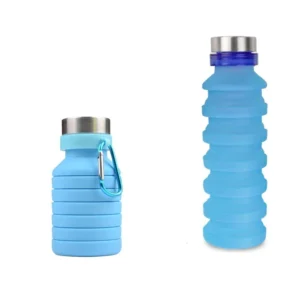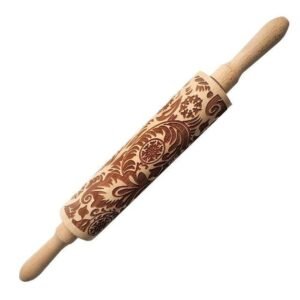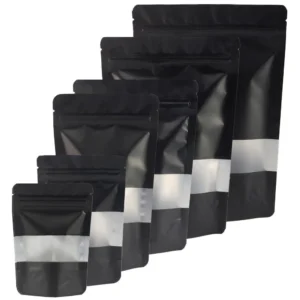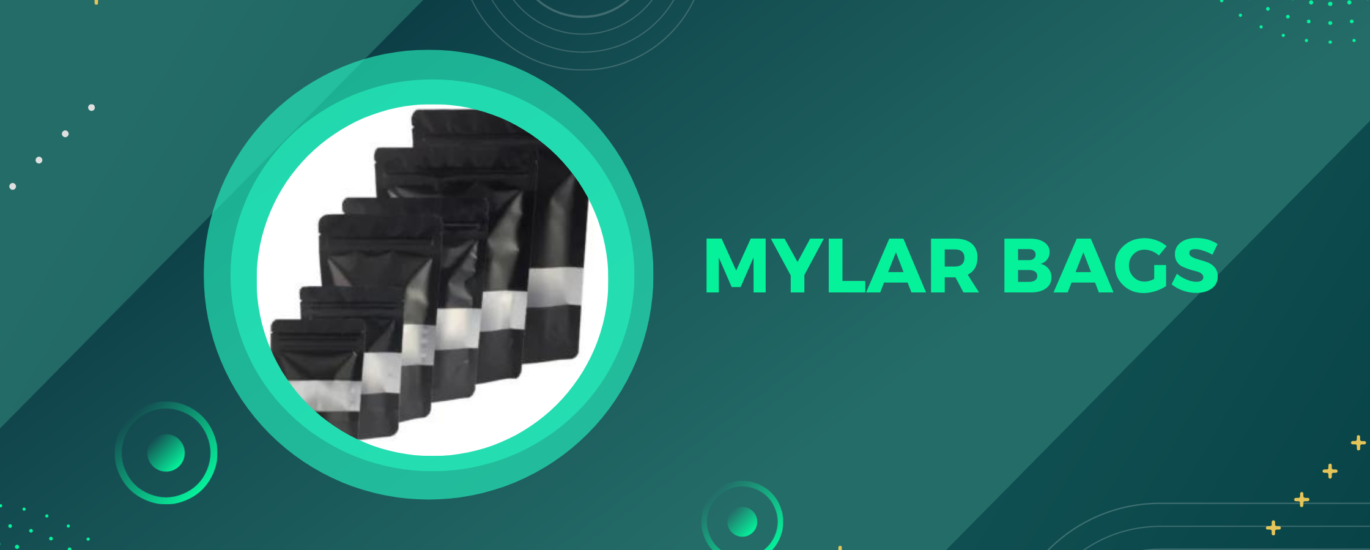Introduction
In the realm of storage and preservation, one solution stands out due to its resilience and effectiveness: Mylar bags. These storage options have revolutionized the way individuals and businesses preserve their essential items, from food to important documents.

Definition and Overview
Mylar bags, technically known as polyethylene terephthalate (PET) films, are specially designed to offer superior protection against various environmental factors. These bags are not your average storage options; they’re crafted from a unique material known for its strength and resistance to elements such as oxygen and moisture. The structure of a Mylar bag typically includes multiple layers, each serving a critical role in preserving the contents within.
- Durability: Unlike traditional plastic, Mylar offers a robust and puncture-resistant composition.
- Protection: It forms a barrier against moisture, gas, and light, safeguarding sensitive items.
The Significance of Mylar Bags in Storage
In considering storage solutions, the significance of Mylar bags cannot be overstated. Their introduction into the market marked a turning point in preservation methods, particularly for food storage. Whether for personal or commercial use, Mylar bags provide an environment that substantially extends the life of the contents stored within.
Here’s why Mylar bags are a staple in effective storage:
- Longevity: These bags significantly extend the shelf life of perishable goods, especially food items.
- Versatility: From safeguarding food to protecting electronics, their use spans various industries.
- Reliability: They offer consistent performance, maintaining quality and freshness of contents over time.
Comparative Analysis of Storage Solutions
| Feature | Mylar Bags | Traditional Plastic Bags | Aluminum Foil |
|---|---|---|---|
| Barrier against oxygen | High | Low | Moderate |
| Moisture resistance | High | Moderate | High |
| Light protection | High | Low | High |
| Durability | High | Low | Moderate |
The Science Behind Mylar Bags
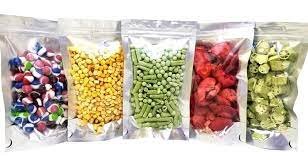
Delving into the world of Mylar bags requires an understanding of the science that underpins their effectiveness. These aren’t just any storage solutions; they’re the result of sophisticated engineering designed to offer unparalleled protection for various contents.
Material & Composition
At the heart of a Mylar bag‘s effectiveness is its unique material and composition. Constructed from a polyester film known as polyethylene terephthalate (PET), these bags incorporate a special layering of aluminum foil and oxygen-barrier materials. This multi-layered structure gives Mylar its distinctive properties.
- Polyester Film (PET): Provides the physical strength and flexibility, ensuring the bag’s durability.
- Aluminum Layer: Acts as a critical barrier against light and certain gases, contributing to a low oxygen transmission rate.
- Oxygen-Barrier Materials: Enhance the bag’s resistance to gas permeation, crucial for food preservation.
The synergy between these materials results in a storage solution that stands leagues above conventional plastic bags or containers.
Components of Mylar Bags
| Component | Purpose | Benefit |
|---|---|---|
| PET | Structural integrity | Durability and resilience |
| Aluminum | Light and gas barrier | Prevents spoilage and degradation |
| Oxygen-barrier materials | Resistance to gas | Maintains product freshness |
Protection Against Oxygen, Light, and Moisture
The superiority of Mylar bags in storage circles comes from their impressive defensive action against common spoilage agents: oxygen, light, and moisture. Each bag functions as a fortress, its layers working in concert to provide comprehensive protection.
- Oxygen Resistance: Oxygen can expedite the degradation of various materials, especially food. Mylar effectively barricades its contents against oxygen intrusion, thereby slowing down decay processes.
- Light Shielding: Light, particularly UV rays, can cause damage and spoilage. The reflective nature of Mylar counters this, offering a protective shield that significantly diminishes light penetration.
- Moisture Defense: Humidity and moisture are enemies of dry storage. The impermeable surface of Mylar bags ensures that internal contents remain dry and unaffected by external humidity levels.
Through their robust composition and protective features, Mylar bags champion the cause of effective, long-term storage. Their science-backed construction and performance make them an indispensable asset in preservation efforts across various sectors.
Various Uses of Mylar Bags
The versatility of Mylar bags manifests in their wide range of applications across different sectors. From households to industries, these bags serve essential purposes, driven by their unique properties.

Food Preservation
In the food sector, Mylar bags are nothing short of revolutionary. They serve as guardians for perishable items, significantly extending shelf life and maintaining quality. Their impermeability to gas and moisture makes them ideal for:
- Dry foods: Keeping items like grains, powders, and spices free from moisture and oxidation.
- Fresh produce: Slowing down the degradation process of fruits and vegetables.
- Processed items: Preserving the flavor, texture, and quality of snacks, cookies, and more.
The food-safe nature of Mylar ensures purity and safety, making it a preferred choice for conscientious consumers.
Emergency Preparedness
When disaster strikes, emergency supplies are a lifeline. Here, Mylar bags shine as reliable storage solutions, protecting essentials from the elements. They are crucial for:
- Long-term food storage: Securing a food supply unaffected by environmental changes.
- Medical supplies: Keeping first-aid items sterile and ready for use.
- Important documents: Preserving paperwork, keeping it legible and intact.
In uncertain times, the durability and protective nature of Mylar provide peace of mind, knowing that critical supplies are safe.
Product Packaging
Beyond personal use, Mylar bags are a staple in the commercial space, particularly for product packaging. Their appeal lies in their ability to maintain product integrity, crucial for:
- Electronics: Preventing damage from static, moisture, and dust.
- Cosmetics: Preserving the efficacy and texture of beauty products.
- Collectibles: Maintaining the condition of valuable items, from comics to coins.
With customizable sizes and styles, Mylar accommodates various products, enhancing shelf life, and consumer experience.
Mylar Bags in Different Sectors
| Sector | Use | Benefit |
|---|---|---|
| Food Industry | Preservation of perishables | Extends shelf life, maintains quality |
| Emergency Services | Secure storage of essentials | Ensures readiness and resource preservation |
| Retail | Product packaging | Protects integrity, enhances presentation |
Choosing the Right Mylar Bags
Selecting the appropriate Mylar bags is crucial to maximizing their effectiveness. Whether for personal or commercial use, understanding the nuances of these bags’ features can significantly impact their performance and suitability for specific tasks.
Sizes and Thickness
The dimensions and thickness of Mylar bags directly influence their capacity and strength. These factors are pivotal in determining the appropriate bag for the items you wish to store. Considerations include:
- Volume of content: Larger bags are suitable for bulk storage, while smaller ones are ideal for portioned items.
- Nature of content: Heavier items require thicker bags for added strength and durability.
- Storage space: Assess your storage area to choose a size that optimizes your space efficiently.
It’s prudent to select a thickness that offers a balance between flexibility and durability, ensuring the bag withstands the intended use without unnecessary bulk.
Sealable vs. Non-Sealable Options
Mylar bags come in sealable and non-sealable varieties, each serving different purposes. Your choice between them should align with your preservation goals and convenience preferences.
- Sealable Bags:
- Ideal for long-term storage, as they offer an airtight seal that locks in freshness.
- Require a heat sealer but provide the utmost protection against contaminants and environmental factors.
- Non-Sealable Bags:
- Suitable for short-term or transitional storage needs.
- Offer easier access to contents, which is convenient for items frequently used.
Understanding your specific needs will guide you in choosing between the accessibility of non-sealable bags and the enhanced protection provided by sealable options.
Choosing Mylar Bags Based on Purpose
| Criteria | Sealable | Non-Sealable |
|---|---|---|
| Long-term storage | Preferred | Not recommended |
| Frequent access | Less convenient | Convenient |
| Protection level | High | Moderate |
Step-by-Step Guide to Using Mylar Bags
Effectively utilizing Mylar bags goes beyond selection; it’s about the right usage. This section provides a hands-on guide to sealing and storing your items, ensuring you leverage the full benefits of these robust storage solutions.
How to Seal Mylar Bags
Sealing is a critical step in using Mylar bags, as it safeguards your items, ensuring longevity and freshness. Here’s a simplified process:
- Fill the Bag: Add your items, leaving enough space at the top for sealing.
- Smooth Out Air: Gently press out excess air, maintaining the bag’s shape without damaging the contents.
- Heat Seal: Using a heat sealer, apply direct heat along the bag’s open end, ensuring it’s completely sealed.
- Test the Seal: Press gently on the sealed area — no air should escape.
A proper seal is impermeable, providing an airtight environment that significantly extends your items’ shelf life.
Best Practices for Storage
Maximizing the efficacy of Mylar bags involves optimal storage practices. Here’s how to ensure your items remain in top condition:
- Cool and Dry Environment: Store your sealed Mylar bags in a dark, cool area, away from direct sunlight and moisture.
- Avoid Overfilling: Respect the bag’s capacity to prevent tears, especially when storing sharp or bulky items.
- Organize Efficiently: Label your bags for easy identification, and consider using storage boxes for added protection and organization.
By following these practices, you preserve the integrity of both the Mylar bags and their contents, ensuring prolonged preservation and quality retention.
Do’s and Don’ts of Using Mylar Bags
| Do’s | Don’ts |
|---|---|
| Use a heat sealer for a secure seal | Don’t use regular tape or staples for sealing |
| Store in a climate-controlled environment | Don’t expose to extreme temperatures or sunlight |
| Label for easy identification | Don’t stack heavy items on top of the bags |
Mylar Bags’ Impact on Food Quality and Shelf Life
The use of Mylar bags transcends mere storage; they play a pivotal role in maintaining the nutritional value and prolonging the shelf life of various food items. Understanding this impact is crucial for anyone looking to preserve food quality over extended periods.
Preserving Nutritional Value
One of the standout benefits of Mylar bags is their ability to preserve the nutritional integrity of stored food. By creating an airtight environment, these bags:
- Minimize Oxidation: Oxygen can degrade food quality and nutrient content. Mylar’s oxygen-resistant nature keeps food nutrients intact.
- Maintain Freshness: The barrier against moisture helps prevent spoilage, preserving the taste and texture of the food.
- Protect from Light: Exposure to light, especially UV light, can degrade food. Mylar effectively blocks light, safeguarding food quality.
Through these mechanisms, Mylar bags ensure that stored food remains nutritious, making them invaluable for health-conscious individuals and institutions.
Extending Shelf Life
Beyond nutrition, Mylar bags are instrumental in significantly extending food’s shelf life. Their unique properties contribute to:
- Longer Preservation: By keeping contaminants and environmental factors at bay, Mylar bags can extend food’s shelf life, reducing waste.
- Consistent Quality: With reduced exposure to harmful elements, food stored in Mylar bags maintains its quality over time.
- Versatility in Storage: From dry goods to dehydrated fruits, these bags are suitable for a variety of food items, providing long-term storage solutions.
The extended shelf life not only means less frequent shopping trips but also contributes to more sustainable consumption patterns by minimizing food waste.
Impact of Mylar Bags on Food Preservation
| Aspect | Effect | Result |
|---|---|---|
| Oxygen Barrier | Reduces oxidation | Preserves nutrient content |
| Moisture Barrier | Prevents spoilage | Maintains freshness and texture |
| Light Protection | Blocks harmful rays | Keeps food quality consistent |
The Future of Storage: Innovations in Mylar Technology
The journey of Mylar bags doesn’t end with current uses. Continuous innovations in material science and consumer needs are shaping the future of Mylar technology, promising enhanced storage solutions and new applications.
Recent Developments
The evolution of Mylar technology has seen significant advancements aimed at increasing the sustainability and efficiency of these storage solutions. Recent developments focus on:
- Eco-friendliness: Newer versions of Mylar bags are being developed with biodegradable materials, reducing environmental impact.
- Enhanced Barrier Properties: Improvements in the bag’s protective layers offer even greater resistance to environmental factors.
These innovations ensure that Mylar technology stays relevant and continues to meet evolving consumer and industry demands.
Predictions for Future Use
Looking ahead, Mylar technology is set to expand its horizons. Predictions for future use include:
- Smart Storage: Integration with technology for humidity and temperature control, potentially coupled with smart labels for easier inventory management.
- Wider Industrial Application: Beyond food, expanding use in pharmaceuticals, electronics, and space exploration for advanced preservation needs.
As we embrace these advancements, Mylar bags are poised to become even more integral in both everyday life and specialized sectors.
Innovations and Predictions in Mylar Technology
| Area | Innovation | Future Prediction |
|---|---|---|
| Environmental Impact | Biodegradable materials | Eco-friendly dominance |
| Functionality | Enhanced protective layers | Smart storage capabilities |
| Applications | Current diverse use | Expansion to new industries |
Conclusion
As we’ve journeyed through the multifaceted world of Mylar bags, one fact stands clear: these aren’t just storage options; they’re an essential ally in preserving quality, extending shelf life, and safeguarding against environmental adversaries. From the kitchen pantry to vast industrial warehouses, Mylar bags offer unparalleled protection, a testament to their scientifically-backed design and material composition.
But the journey doesn’t end here. With advancements leaning towards eco-friendliness and smart storage, the future of Mylar technology is not just bright; it’s gleaming with potential. We’re looking at a horizon where our storage solutions are not only more effective but also more integrated with our needs and conscious of our environment.
FAQs
What is the purpose of Mylar bags?
Mylar bags are designed for preserving and protecting contents from moisture, light, and oxygen, thereby extending shelf life and maintaining quality.
What should you not store in Mylar bags?
Avoid storing sharp objects or chemicals that could puncture or react with the bag’s material, compromising its integrity and protective properties.
How do you heat seal Mylar bags?
To heat seal Mylar bags, place the open end in a heat sealer, apply heat and pressure for a few seconds, ensuring an airtight seal.
What is a Mylar bag for?
Mylar bags protect and preserve contents from environmental hazards like moisture, light, and oxygen, extending product shelf life.
What can be stored in Mylar bags?
You can store food, electronics, pharmaceuticals, and other items requiring protection from moisture, light, and contaminants.
What foods come in Mylar bags?
Dehydrated, freeze-dried foods, coffee, teas, herbs, spices, and various snacks are often packaged in Mylar bags.
What is the difference between Mylar and plastic?
Mylar is a polyester film offering superior protection against oxygen, moisture, and light compared to regular plastic.
Is Mylar a plastic?
Yes, Mylar is a specialized polyester film made from polyethylene terephthalate (PET) fibers, a type of plastic.
Is Mylar safe for food?
Yes, Mylar is food-safe, providing a protective barrier against environmental factors, thus preserving food quality and freshness.


